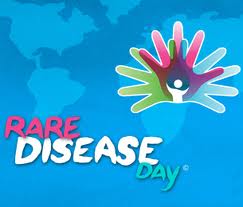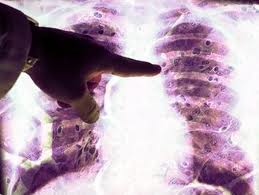Mesothelioma awareness fits the focus of Rare Disease Day 2013
The fifth annual U.S. Rare Disease Day was held on February 28th. Organized and supported by the National Organization for Rare Disorders (NORD), this event has been created to direct public attention on approximately 7,000 rare diseases that affect almost 30 million people in America. And among the rare “orphaned” disorders is Mesothelioma, the asbestos-related cancer disease which affects one-tenth of the American population.
 Orphan disease status is assigned to any disease or disorder that fewer than 200,000 people in the United States. Mesothelioma cancer, for example, has about 3,000 people in American that are diagnosed each year with the disease. Rare Disease Day is an international advocacy day designated to raise public awareness of rare diseases, such as Mesothelioma, and increase recognition globally with a concern solving rare disease effects.
Orphan disease status is assigned to any disease or disorder that fewer than 200,000 people in the United States. Mesothelioma cancer, for example, has about 3,000 people in American that are diagnosed each year with the disease. Rare Disease Day is an international advocacy day designated to raise public awareness of rare diseases, such as Mesothelioma, and increase recognition globally with a concern solving rare disease effects.
According to NORD president and CEO, Peter Saltonsall, “There are nearly 30 million Americans—and millions more around the world—affected by rare diseases”
“Everyone knows someone with a rare disease. But, while many of these diseases are serious and lifelong, most have no treatment and many are not even being studied by researchers. This leaves patients and families without hope for a better future.”
Because mesothelioma is relative rare, as are other orphan diseases, managing this cancer and attempting to discover appropriate treatment is sometimes overwhelming to the patient and their family. And based on government statistics, orphan diseases are serious or life-threatening to 85-90 percent of patients, and still as few as 200 of theses diseases like mesothelioma have any effective treatments currently.
Mesothelioma Cancer and the National Organization for Rare Disorders
This years conference theme for 2013 is global in focus, called “Rare Disorders Without Borders.” The day will have special significance for the United States since this year 2013 is the 30th anniversary of the congressional Orphan Drug Act. Therefore, there are additional incentives that should encourage U.S. companies to develop treatments for rare diseases, as well as for N.O.R.D. which was established in 1983 by advocates of patients with rare disorders like mesothelioma cancer.
N.O.R.D. set the 2013 program for Rare Disease Day to include activities in the U.S. that place a spotlight on awareness events at many State Houses, a Rare Disease Research Hall of Fame, a Handprints Across America photo gallery, and an event at the National Institutes of Health (NIH) in Bethesda, MD.
Even after the passing of this special day, we still need your support and advocacy, so you still can get more information about Rare Disease Day activities for the United States at: www.rarediseaseday.us. And additional information about global activities can be found at: www.rarediseaseday.org.
MESOTHELIOMA DIAGNOSIS
Mesothelioma diagnosis typically begins with a sufferer’s visit to the doctor complaining of chronic chest pain. This pain is caused as a result of a buildup of fluid inside the pleural space; this is called pleural effusion and is the most common presenting symptom of malignant mesothelioma.
Preliminary mesothelioma detection can be achieved through a chest imagery scan (CT scan, x-ray); however, mesothelioma is often misdiagnosed as viral pneumonia at this stage because of certain symptomatic similarities between the two. The only way to definitively verify a suspected case of malignant mesothelioma is through a biopsy.
A biopsy is a relatively minor procedure (dependent on the location of the tumor) during which a small section of suspect tissue is removed. The removed section is examined by a histopathologist, an expert in the study of diseased tissue. Histopathological examination can confirm a case of malignant mesothelioma while also typing and staging it. Understanding the type and stage can help doctors suggest the best of treatment.
You can also have your questions about malignant mesothelioma and clinical trials for new cures, answered for free by Dr. Gill at the Mesothelioma Research Foundation of America by clicking here: Ask Dr. Gill




